Automatic layer alignments are one of the most useful but underappreciated features of Photoshop. Perhaps it says something about my personality, but a slightly misaligned layer can make my brain crackle – and not in the fun PhotoshopBuzz kind of way, in an “I have to fix that right now” kind of way.
Even if you’re lucky and don’t suffer the same sort of mental quirk, it’s still possible to drive yourself to frustration trying to align your layers by hand.
Fortunately, it’s the kind of task that computers excel at, so we should let them do all the work! Here’s how.
Table of Contents
1. Align Simple Layers Using the Move Tool
Photoshop’s layer alignment tools are actually located in the options panel at the top of the image window when the Move command is selected. They’re quite simple to use, but if you’re not familiar with the basics, then you might wonder why they’re often unavailable.
With the Move tool active, open the Align and Distribute panel, which is also oddly hard to find (see screenshot below).

Next, you’ll need to locate the Align To: setting (again, see below). If it is set to Selection, you need to have an active selection marquee OR multiple layers selected in the Layers panel in order for the alignment buttons to be available.

To select multiple layers in the Layers panel, hold down the Ctrl key on PC or Command key on Mac and click each layer you want to select.
At that point, it’s fairly self-explanatory: you can align along any edge or the center of your selections using the appropriate button.
You can also switch the Align To: setting to Canvas, which will allow you to align one or more layers to the document as a whole, which is a huge help for accurately centering multiple layers without doing any calculations yourself.
I don’t know why Adobe decided to make these useful options so difficult to access, but I suspect it’s because they’re trying to discourage people from using Photoshop as a layout program in favor of their other dedicated graphic design programs.
For a while, Photoshop was becoming a “one-stop shop” for design work, and that doesn’t really fit with Adobe’s plans – and, to be fair, it also doesn’t fit with Photoshop’s core strengths.
2. Align Layers With Smart Guides
Aligning layers can be a complicated business, and sometimes, using the Move tool doesn’t give you exactly the results you’re looking for.
One of my favorite additions to Photoshop is the Smart Guides feature, which intelligently (or, at least, sort of intelligently) looks at your image and guesses your intentions.

It doesn’t always work perfectly, but Smart Guides can be a huge help for tricky alignment situations, such as ensuring that two image elements are the same distance away from your document edges. The alignment options in the Move tool definitely can’t keep up with that!
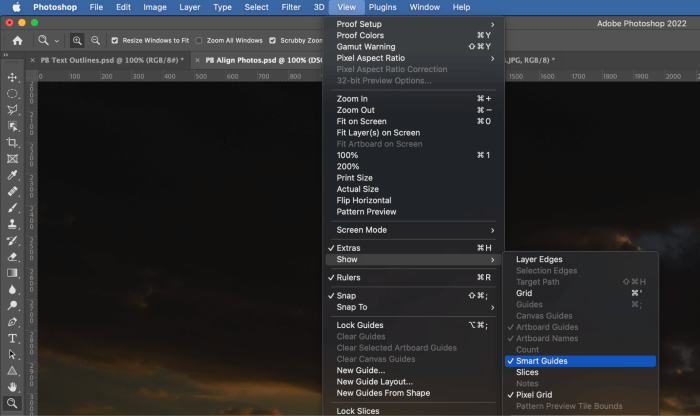
Smart Guides are enabled by default, but they only appear when they’ve got something to offer. To ensure they’re still enabled, open the View menu, select the Show submenu, and make sure there is a checkmark beside Smart Guides. If they’re enabled but you’re still not seeing them, make sure that Extras are also enabled in the View menu, just above the Show submenu.
3. Automatically Aligning Photos
There is another type of automatic layer alignment that’s necessary for a lot of common Photoshop tasks, but it’s more complicated than the methods above. It’s a great help for focus stacking, HDR compositing, panoramas, and other creative multi-frame projects.
The only real trick to this process is how you open your images. Since all your images need to be on separate layers in the same document, you could copy and paste them individually, but there’s a much easier way – especially if you’re working on a focus stack of 25 images!
Open the File menu, select Scripts, and choose Load Files into Stack.
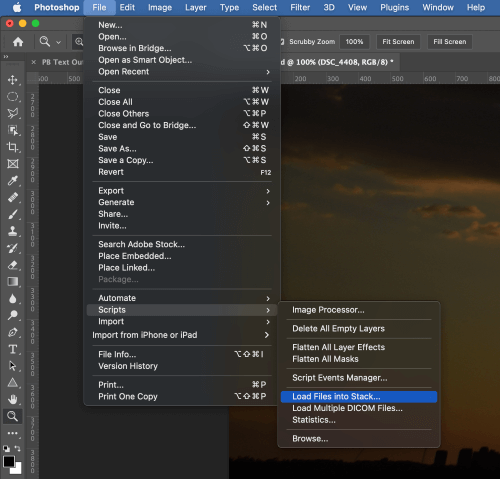
Photoshop will start by opening the Load Layers dialog box, offering handy shortcuts like Add Open Files and letting you open an entire folder’s worth of images at once.
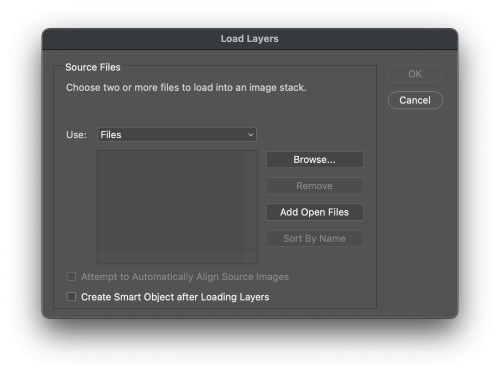
Note: You can also check the Attempt to Automatically Align Layers box in the Load Layers dialog box to make this a one-step process, but I’m going to show you the full process as well just in case you need a specific alignment type.
Now that you’ve got your photos open in the same document as separate layers, open the Edit menu and click Auto-Align Layers.
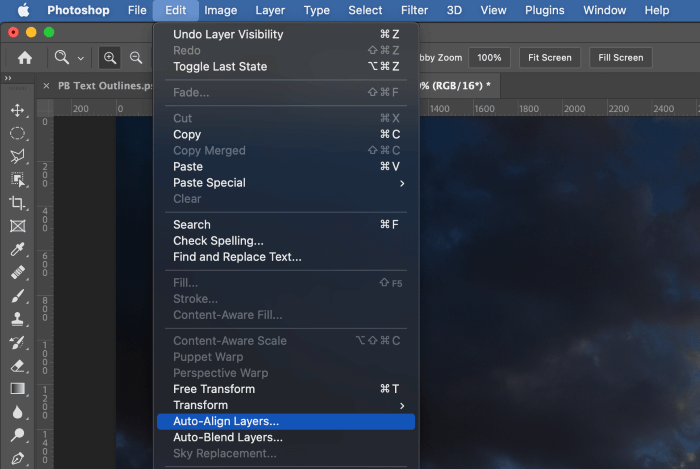
Photoshop will open the Auto-Align Layers dialog, which lets you select from a range of different alignment options. Unless you know specifically which setting you need, it’s usually best to just leave it on Auto and let Photoshop sort it out, as most of the options are used for creating panoramas. We are trying to do this all automatically, after all!
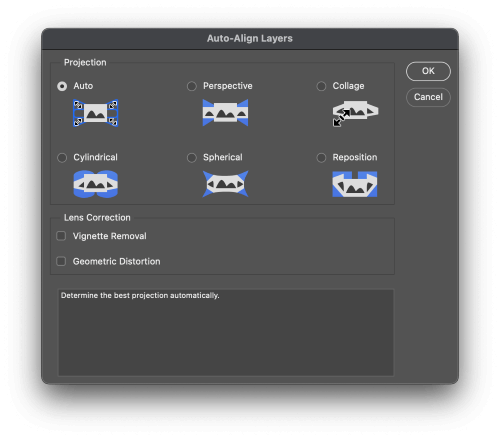
Click OK, and Photoshop will chug away in the background for a moment while it checks each layer for possible alignments and adjusts the placement and shape as needed.
It may not look like much, but small misalignments can have a huge impact on your final image when you’re doing multi-frame compositing!
A Final Word
Photoshop may not be intended as a graphic design layout program, but there are still plenty of good reasons to automatically align your layers. A combination of the Move tool’s alignment features and Smart Guides will help make your life a lot easier, and you won’t have to spend your time calculating offsets and pixel measurements.
Even if you need to align photo layers from multiple angles, Photoshop saves the day. With a bit of luck, you’ll never have to do any math in Photoshop again 😉
Happy aligning!
About Thomas Boldt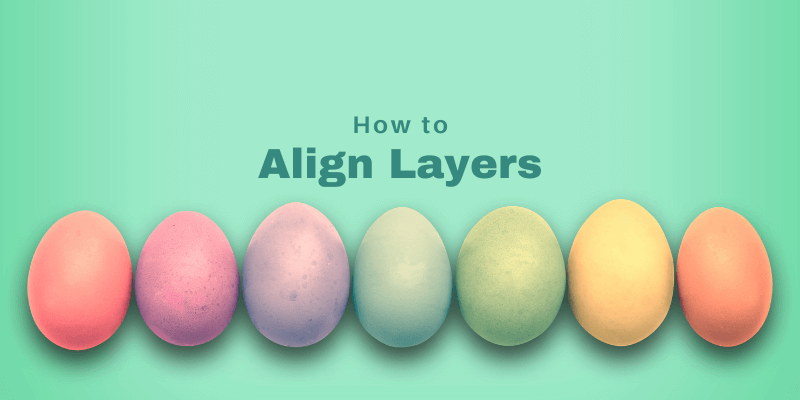
Md.Manjurul Ahsan
Very helpful article! Thanks alot.